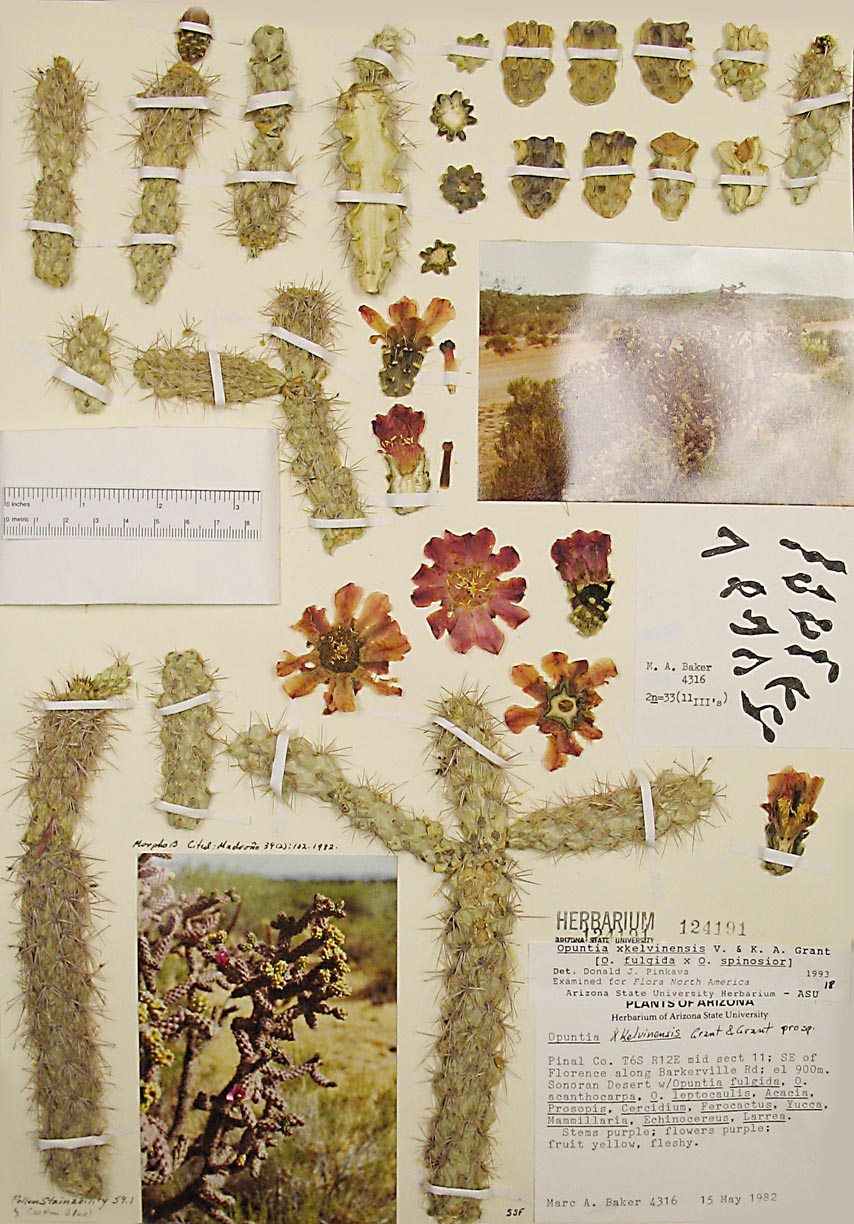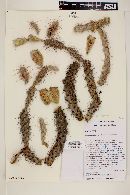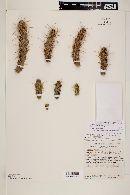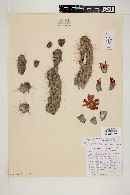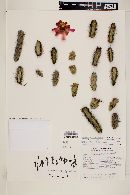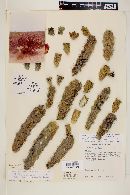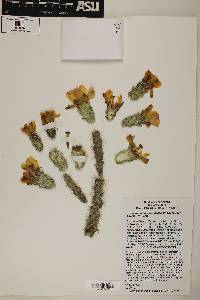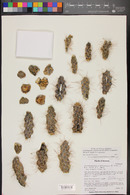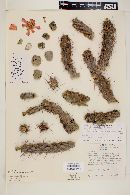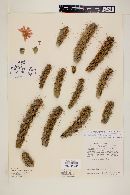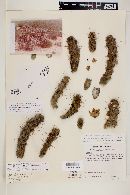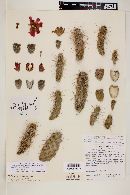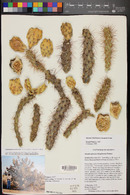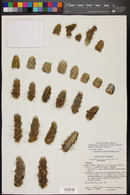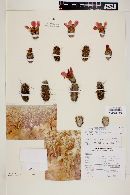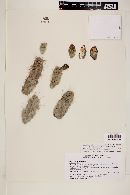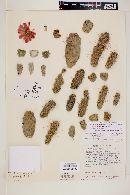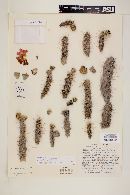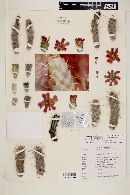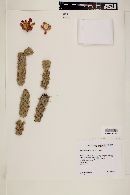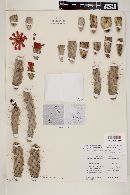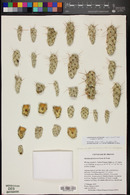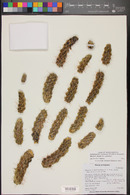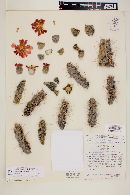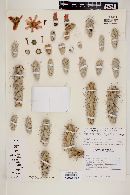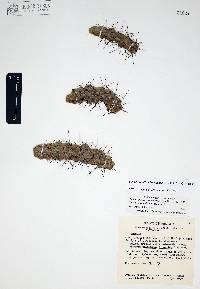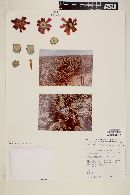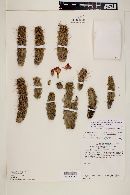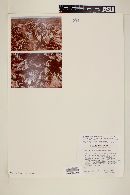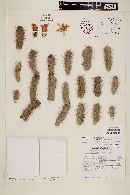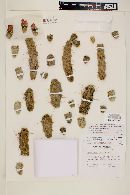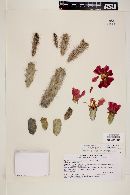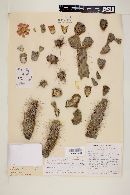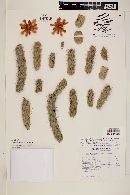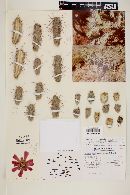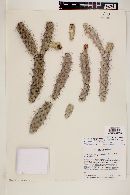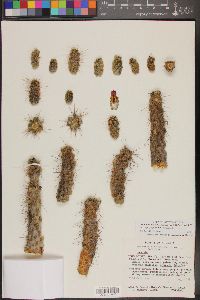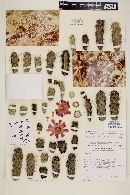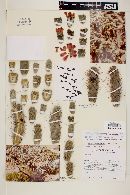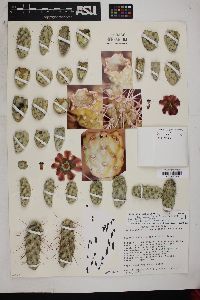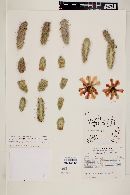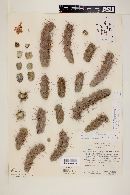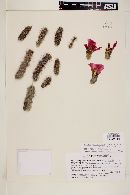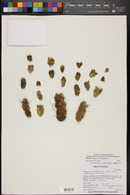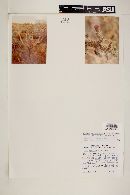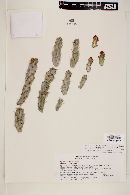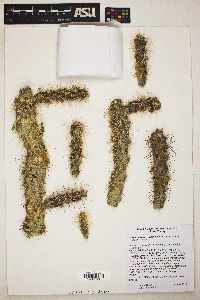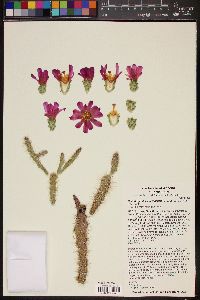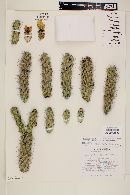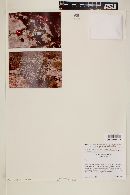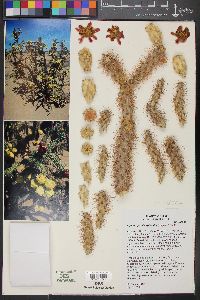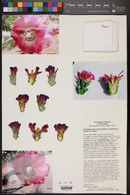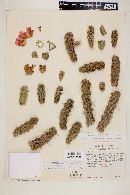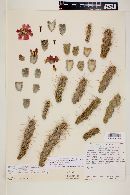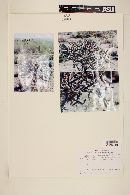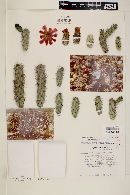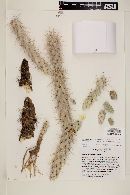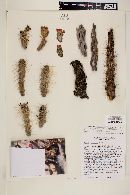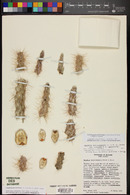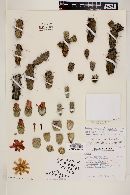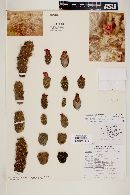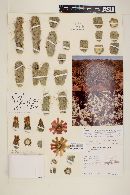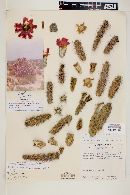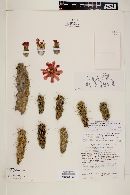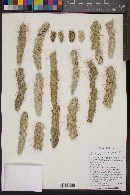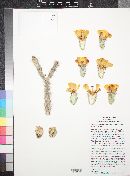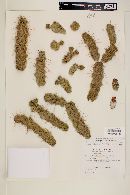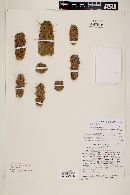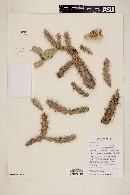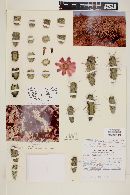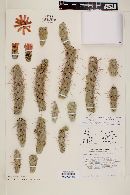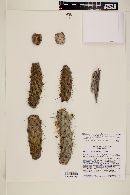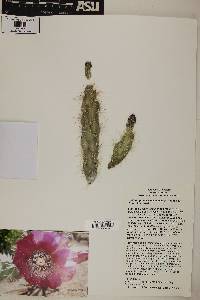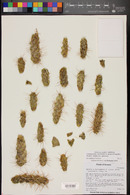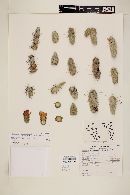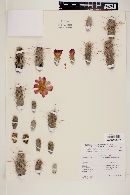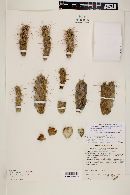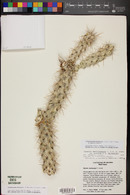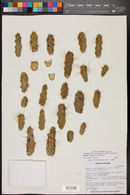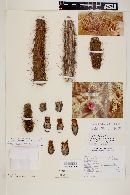
|
|
|
|
Family: Cactaceae
Kelvin cholla
[Opuntia kelvinensis V.E.Grant & K.A.Grant, moreOpuntia x kelvinensis V.& K. Grant] |
Trees 1.5-2 m; trunk commonly branched; crown open to compact usually bearing whorled branches. Stem segments often easily dislodged, if terminal, green or purple, 5-13 × 1.8-3 cm; tubercles prominent, broadly oval, 0.7-1.2(-1.5) cm; areoles obdeltate to rhombic, 4.5-6 × 3-5 mm; wool yellow, aging gray to black. Spines 0-8(-13) per areole, sometimes with 1-3 bristlelike spines along areole margins at most areoles, usually slightly interlacing with spines of adjacent areoles, yellowish to tan, sometimes with pinkish hue, to red-brown and partially gray coated, aging brown-gray to gray; major abaxial spines angular-flattened, usually reflexed, the longest to 30 mm; major adaxial spines subterete, erect-divergent, the longest to 18 mm; sheaths uniformly whitish or tipped yellow to gold, slightly baggy. Glochids in inconspicuous adaxial crescent, yellow, to 1 mm. Flowers: inner tepals rose to magenta, spatulate, 18-25(-30) mm, emarginate-apiculate; filaments deep rose; anthers yellow; style white, tinged red-purple distally; stigma lobes white with hint of green. Fruits usually sterile, sometimes forming short chains, yellow-green to yellow, sometimes purplish, 25-45 × 15-22 mm, fleshy, tuberculate, spineless; tubercles progressively longer toward fruit apex; umbilicus 4-7 mm deep; areoles 32-44. Seeds pale yellow, orbicular to angular or squarish in outline, flattened to warped, 3.5-4 × 3-4 mm, sides with 0-2 large depressions; hilum sometimes pointed; girdle smooth. 2n = 22, 33. Flowering spring (Apr-Jun). Sonoran desert scrub, edges of grasslands, rocky flats and slopes, rolling hills; 500-1000 m; Ariz. Plant: tree 1.5-2 m tall, the trunks commonly branched, the open to compact crown usually bearing whorled branches; STEM segments green to purple, the terminal ones often easily dislodged, 5-13 cm long, 1.8-3 cm in diam.; tubercles prominent, broad-oval, 7-12(-15) mm long. AREOLES yellow-felty, aging gray to black, obdeltoid to rhombic, 4.5-6 mm long, 3-5 mm wide Leaves: SPINES at most areoles, yellowish to tan, sometimes with pinkish hue, to red-brown and partially gray-coated, aging brown-gray to gray, usually slightly interlacing, 0-8(-13) per areole, sometimes with 1-3 bristle-spines along areole margins; sheaths uniformly whitish or yellow- to gold-tipped, slightly baggy; major distal spines subterete, erect-divergent, the largest to 18 mm long; major basal spines angular-flattened, mostly reflexed, the largest to 30 mm long. GLOCHIDS yellow, in an inconspicuous apical crescent, to 1 mm long Flowers: inner tepals, rose to magenta, spatulate, emarginate-apiculate, 18-25(-30) mm long; filaments deep rose, the anthers yellow; style rose apically, whitish basally; stigmas cream to white Fruit: yellow-green to yellow, sometimes purplish, the prominent tubercles progressively longer toward apex, sometimes forming short chains, fleshy, spineless, usually sterile, 25-45 mm long, 15-22 mm in diam., the umbilicus 4-7 mm deep; areoles 32-44. SEEDS 3.5-4 mm long, 3-4 mm wide, pale yellow, orbicular to angular or squarish in outline, flat to warped, the side smooth, each with 0-2 large depressions, 3.5-4 mm long, 3-4 mm wide, the girdle smooth, the hilum sometimes pointed Misc: Desertscrub, edges of desert grasslands, rocky flats and slopes, rolling hills; 550-950 m (1800-3100 ft); Apr-Jun REFERENCES: Pinkava, Donald J. 1999. Cactaceae. Ariz. - Nev. Acad. Sci. 32(1). |
This project was made possible in part by the Institute of Museum and Library Services [MG-70-19-0057-19].
Powered by Symbiota

